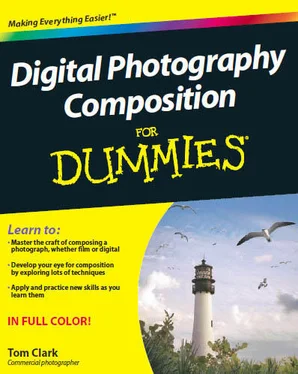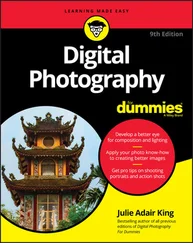For example, viewers may see a composition in which the left side of the frame is red and the right side is blue as a conflict or opposition. And if one color takes up more space than the other, the story starts to change. Likewise, two different shades of red in the frame sends a different message than the photograph of red and blue. Just two colors in one frame can create an infinite number of feelings or ideas.
Using shapes and tines to create meaning
Adding shapes and lines to your composition increases the number of ways a viewer may interpret the meaning of an abstract photograph. The thickness of a line or the size of a shape compared to another creates relationships of space and distance. Although shapes and lines in abstract works are non-representational in a literal sense, they can and do represent things in a non-literal sense. For instance, a line in the shape of a smile probably gives the sense of happiness. And a shape that's fading off to one side and followed by streaks gives a sense of motion.
Separations in tone — or lightness and darkness — provide the idea of space in abstract works. The gradual differences between lightness and darkness either make something seem closer or farther away, depending on how the viewer perceives the entire piece of work. In Figure 17-4, for example, the farthest point seems to be represented by the lightest area.
Tonality combined with size and placement is the key to three-dimensional compositions. A subject that takes up more space than another and is placed lower in the frame will appear to be closer. By making that subject lighter in tonality, you increase this effect.
50mm, 1/250 sec, f/1.2, 50
Figure 17-4:Tonality is the main element in this abstract photograph.
Compositions that range from very dark tones to very light tones are high in contrast and come across as being dramatic or tense. Having a less drastic change in tonality decreases this effect.
Abstract compositions can be simple or complex, but they're successful only when they convey a message. When the unrecognizable elements in your frame come together to represent something familiar based on your composition of them, you have created a work of art. You can set out to look for abstract themes in the things that surround you, or you can simply start taking pictures that are out of focus and hope for results.
Here are some pointers to get started:
Get very close to your subjects to help eliminate their identities.A
microscopic view of a person's skin doesn't look anything like the way you see it normally. You can use macro photography techniques to achieve this effect. For more on macro photography, refer to Chapter 14.
Experiment with your camera and shoot familiar objects in unfamiliar ways.Focus on the shapes and textures of things rather than what they actually are.
Photograph the shadows created by some common subjects and think of ways to alter their shapes.The shadow of a person, for example, can become warped when it falls on the edge of a rock wall that's jagged and warped itself.
Pay attention to the colors, lines, shapes, and tones in your scene, and consider how they work together to convey a message. If something in your frame doesn't support what you're trying to say, perhaps you can eliminate it from the scene. Move your subject or change your camera angle to alter your composition until things fall into place. Refer to Chapter 5 for information on the placement of elements in a frame.
Combining Multiple Shots to Create a Single Photo
Combining multiple images into one is a great way to get more creative with your photography. It gives you the option to include more elements in a photograph than what's available in a single scene. For example, you could create an image that shows the sun and the moon at one time. Your ability to control your message is maximized with this technique.
Photo-editing software has taken the idea of multiple exposures and collages to a level of perfection that gives you 100 percent control. Taking two separate images and placing them together in postproduction provides far more precise results than trying to do so in camera.
In this section, you discover the concept of creating multiple exposure look-alikes and collages. See Chapter 18 for further details on postproduction improvements and techniques.
Mimicking a made-up scene With multiple exposures
Sometimes a single scene doesn't provide enough information for your photograph's intended message. Perhaps you like the subject but would prefer a background that was more supportive of the way you perceive that subject. To provide such a background, photographers often use multiple images and composite one on top of the other during postproduction.
When you create a multiple exposure on film, the separate images stand out based on how they were exposed in comparison with each other. The process is technical and requires proper planning — or luck. When creating multiple exposures in digital photography, however, you can simply shoot each
image as its own photograph and then combine them with photoediting software. Combining photos with computer software gives you more control over how much visual impact each photograph has in your final image. It also enables you to position everything with precise detail.
When combining images, think of the final image as a puzzle. The elements of each image combine to create one composition and one message. Fit the various elements into your frame according to the rules and ideas that I discuss in Chapter 5 and throughout this book. If you want to know more about the technical process of exposure, check out Digital Photography Exposure For Dummies by Jim Doty (Wiley).
Some concepts that photographers commonly apply when combining multiple images include the following:
" Ghosted images of people: Ghosted images are those that show a subject that's fading or transparent. You can achieve this technique through motion blur (see Chapter 16) or through the use of multiple exposures. By overlaying an image on top of another (one with the person and one without), you can achieve the ghosted effect. This technique is useful in messages that pertain to the memory of someone or the essence of their presence.
" Action sequences:Popular in sports photography, action sequences result from a still camera taking images rapidly while a subject completes any action as it moves through the scene. You may use an action sequence to show a skater doing a trick on her skateboard, for example. The photos are then combined to create one image that shows the entire sequence from beginning to end.
You need a camera that shoots very fast in order to capture a fast-moving subject in this way. Ten frames per second usually gives you enough frames to work with, but anything less than that may not be quick enough to provide a complete sequence. After all, if the action only lasts for a second and your camera can only shoot three frames per second, you'll only have three images to use in the final image. And that number of images wouldn't be very descriptive as to what happened in the one second.
0 Busy images that reveal chaos as a message:This technique is used when there's more to the story than can be captured with one photograph and when you want to cram as much information as possible into one frame. For instance, combining multiple images of scenes in Manhattan at night would convey the idea that it's a busy place — the city that never sleeps. By combining the neon signs of various bars
Читать дальше
Конец ознакомительного отрывка
Купить книгу












